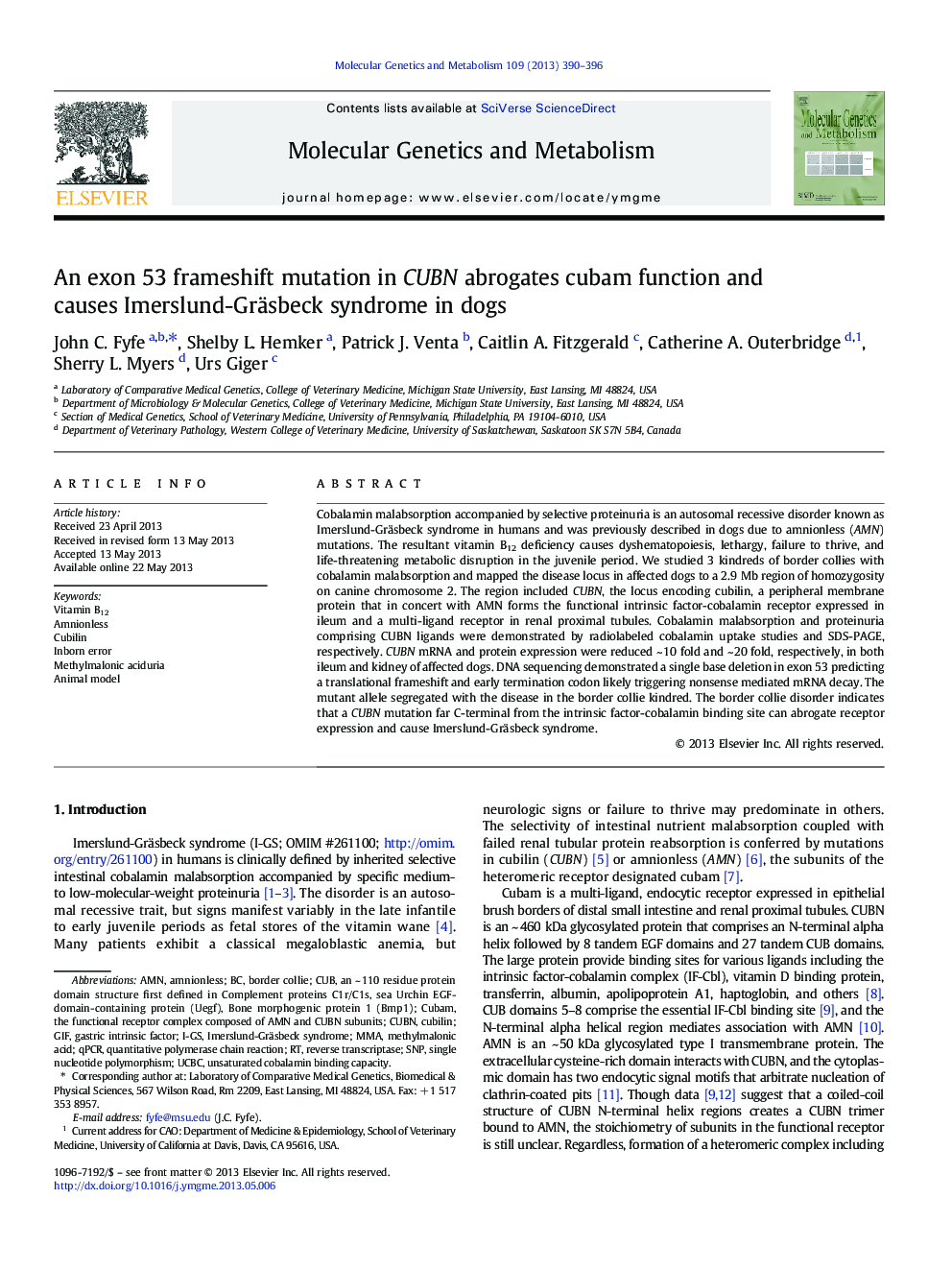| Article ID | Journal | Published Year | Pages | File Type |
|---|---|---|---|---|
| 10833664 | Molecular Genetics and Metabolism | 2013 | 7 Pages |
Abstract
Cobalamin malabsorption accompanied by selective proteinuria is an autosomal recessive disorder known as Imerslund-Gräsbeck syndrome in humans and was previously described in dogs due to amnionless (AMN) mutations. The resultant vitamin B12 deficiency causes dyshematopoiesis, lethargy, failure to thrive, and life-threatening metabolic disruption in the juvenile period. We studied 3 kindreds of border collies with cobalamin malabsorption and mapped the disease locus in affected dogs to a 2.9Â Mb region of homozygosity on canine chromosome 2. The region included CUBN, the locus encoding cubilin, a peripheral membrane protein that in concert with AMN forms the functional intrinsic factor-cobalamin receptor expressed in ileum and a multi-ligand receptor in renal proximal tubules. Cobalamin malabsorption and proteinuria comprising CUBN ligands were demonstrated by radiolabeled cobalamin uptake studies and SDS-PAGE, respectively. CUBN mRNA and protein expression were reduced ~Â 10 fold and ~Â 20 fold, respectively, in both ileum and kidney of affected dogs. DNA sequencing demonstrated a single base deletion in exon 53 predicting a translational frameshift and early termination codon likely triggering nonsense mediated mRNA decay. The mutant allele segregated with the disease in the border collie kindred. The border collie disorder indicates that a CUBN mutation far C-terminal from the intrinsic factor-cobalamin binding site can abrogate receptor expression and cause Imerslund-Gräsbeck syndrome.
Keywords
Related Topics
Life Sciences
Biochemistry, Genetics and Molecular Biology
Biochemistry
Authors
John C. Fyfe, Shelby L. Hemker, Patrick J. Venta, Caitlin A. Fitzgerald, Catherine A. Outerbridge, Sherry L. Myers, Urs Giger,
